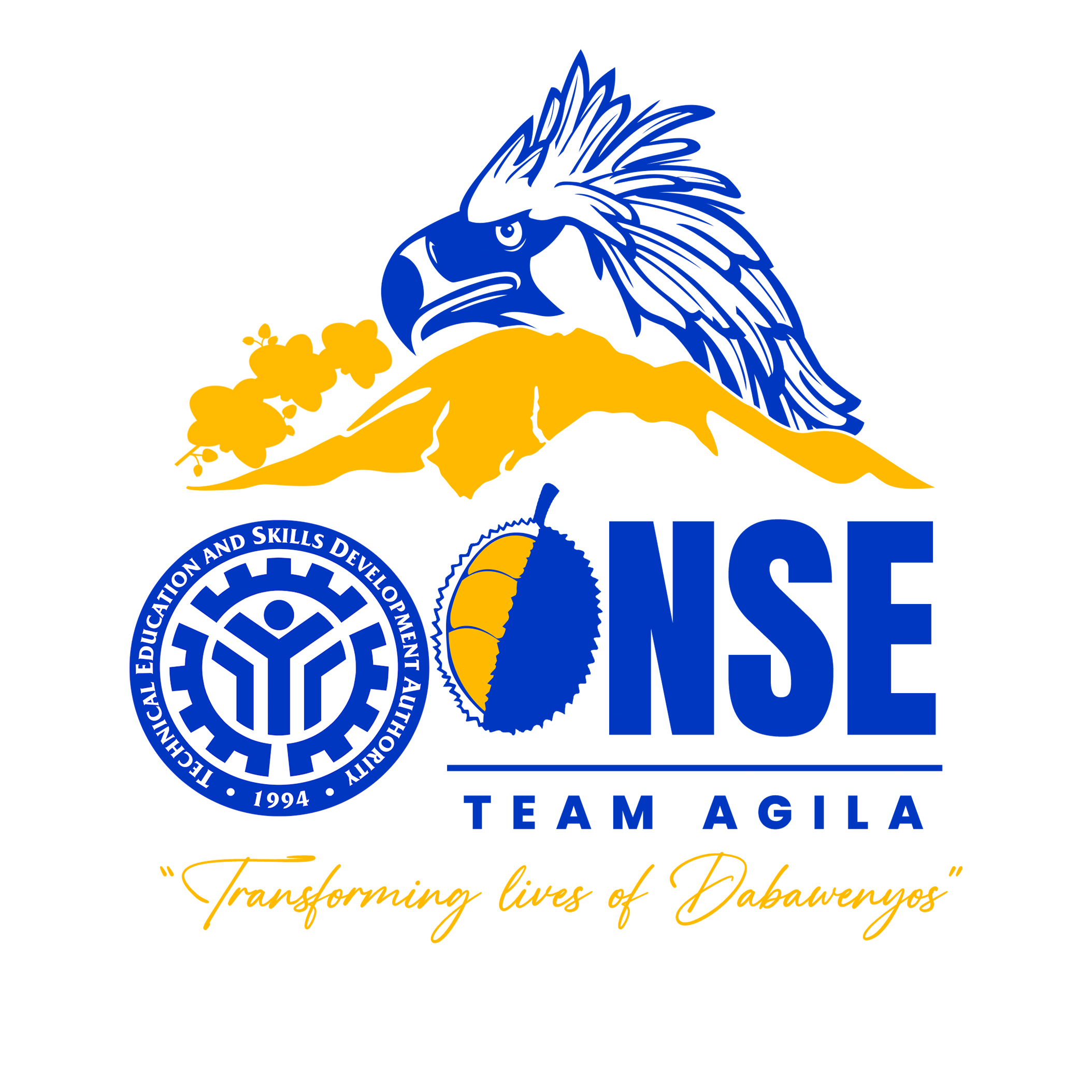Vibrant Quality TVET for Decent Work and Sustainable Inclusive Growth
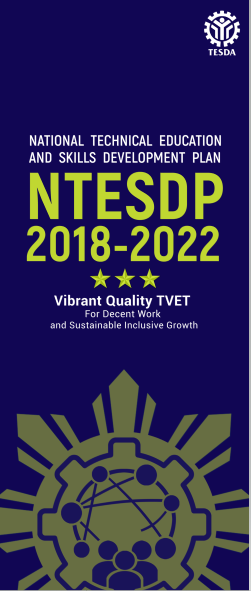
BACKGROUND: WHY CREATE A PLAN IN THE FIRST PLACE?
Download the NTESDP here↗
TESDA is bound by law to create a medium-term (six-year) Plan for middle-level workforce that will guide all stakeholders – government, industry, academe, local and international organizations, students, and the public – for the development of the middle-level workforce.
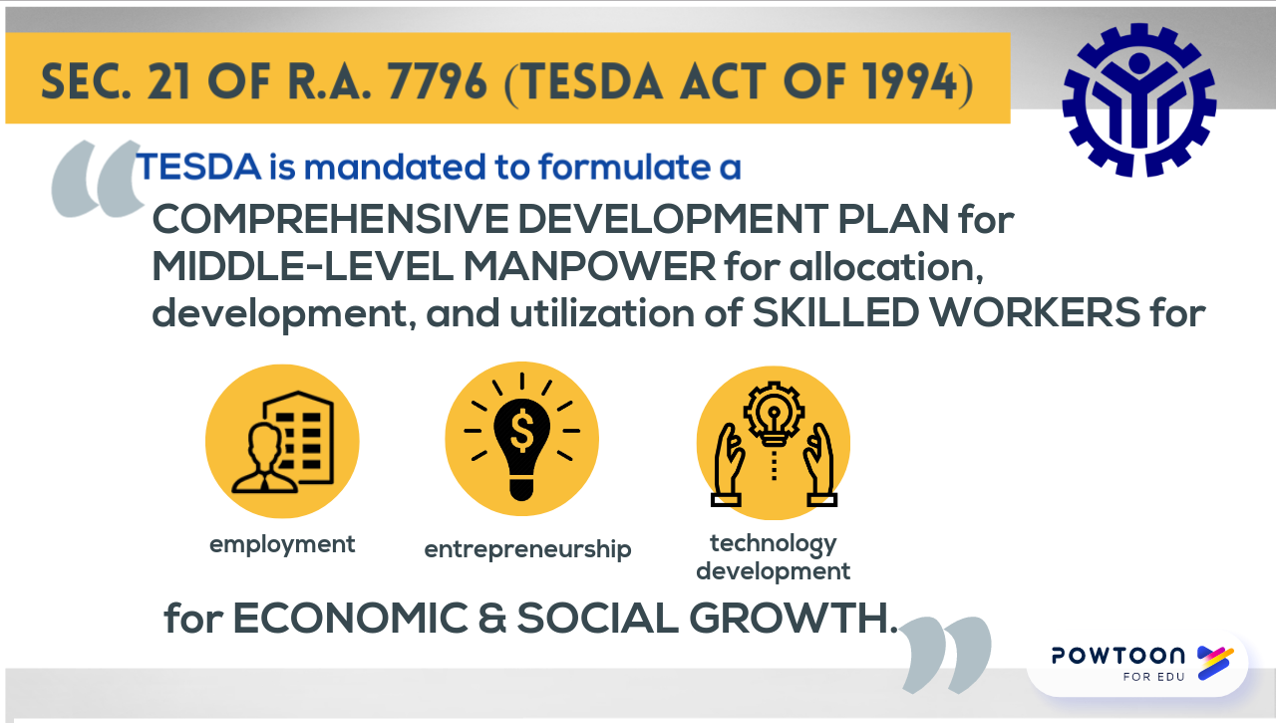
THE NTESDP 2018-2022
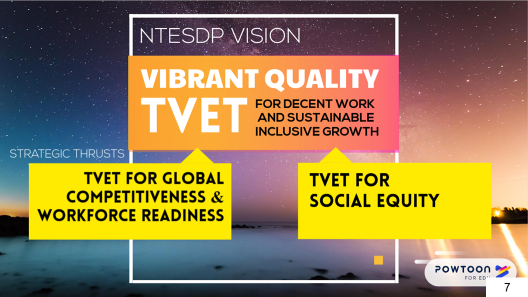
True to this mandate, the TESDA, in cooperation with its partners and relevant sectors, has formulated the National Technical Education and Skills Development Plan 2018-2022,
in the development of the Philippines’ human capital resources.
The National Technical Education and Skills Development Plan 2018-2022, NTESDP for brevity, serves as a compass that informs the Technical Vocational Education and Training
(TVET) actors, movers, and leaders in coming up with responsive policies and implementing programs for the sector, and to support the broader development goals and objectives
of the national government.
The NTESDP envisions a Vibrant Quality TVET for Decent Work and Sustainable Inclusive Growth. This overarching theme is the rallying cry that primes the TESDA and its partners to achieve the
NTESDP’s primary objective of galvanizing and strengthening the TVET sector through a Two-Pronged Strategic Thrust: (1) Global Competitiveness and Workforce Readiness; and (2) Social Equity
for Workforce Inclusion and Poverty Reduction.
PLANNING ENVIRONMENT
In formulating the Plan, TESDA identified, reviewed, and analyzed external and internal environments and global and local factors that affect the TVET sector.
It aligned the Plan with global, national, and sectoral development plans, national education legislation, and international standards referencing systems.
The planners drew contemporary lessons from labor and employment realities, such as migration; paradigm shifts in technology, particularly the fourth industrial revolution (4IR);
ecology; climate change and green economy; sustainability; and gender and social equity advocacies.
THE TVET SECTOR
Generally, the Philippines’s TVET sector has been experiencing healthy growth. But while it receives only one percent of Gross Domestic Product in government funding support,
TESDA’s budget more than doubled from P2.7 billion in 2012 to P6.4 billion in 2016.
Scholarship funding has boosted enrollment and produced positive results, with the average employment rate of TVET graduates with scholarships posting higher than the average employment rate for all TVET graduates.
TVET providers are likewise enjoying unprecedented growth. In 2016, there were already 4,075 private and public institutions, compared to only 3,381 in 2007.
Between 2010 and 2016, institution-based training had recorded 1.023 million enrollees, followed by community-based training with 824,000. The growth in enrollment was fueled by community-based or barangay-oriented programs.
Enterprise-based training was the most successful training modality in terms of employment, but this training modality has not gained traction, with enrollees only reaching 77,000.
Further, TVET is gaining more attention as the education sector evolves and develops more sophistication, starting with the K to 12 program and onto international referencing initiatives and agreements,
like the ASEAN Qualifications Framework and other mutual recognition systems. These are creating opportunities to expand TVET capacity and performance, both as an education infrastructure and a human capital development platform.
TVET has also found a place in certain subsectors of the labor and employment market. Today, TVET graduates are successfully employed in such sectors as (1) tourism (hotels and restaurants); (2) ICT; (3) health, social, community,
and other services; (4) electronics; and (5) metals and engineering. The growth of certain industries like tourism, construction, and ICT is certainly benefiting TVET as these industries require more skilled workers.
As to TESDA, it has benefitted from the support of industries which have helped the Authority develop a total of 264 Training Regulations (TRs) led by construction, which has 43 TRs.
Relative to this, TESDA is ensuring quality standards for providers and trainers as part of its mandate.
NTESDP’S KEY EMPLOYMENT GENERATORS
The NTESDP 2018-2022 has identified the country’s key employment generators and divided these into three groups.
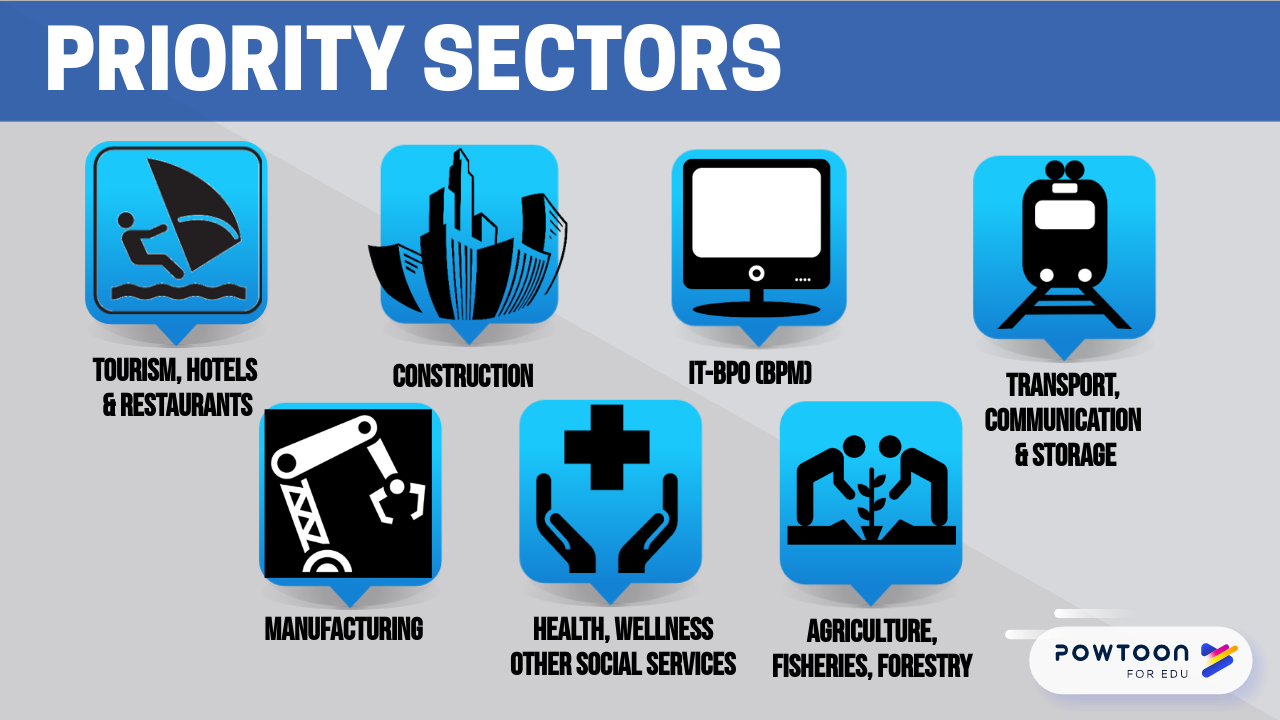
The first group consists of industries that have large employment bases and are growing very rapidly. These industries are expected to create the most number of jobs during the Plan period. These are tourism/hotels/restaurants;
construction; IT-BPO (IT-BPM); and transport, communication and storage.
The second group consists of industries that have large employment bases but have exhibited negative or minimal growth rate in the past. However, since these industries are important to the economy in terms of value-added and employment,
the government wants to revitalize and strengthen them. These are agriculture; fisheries and forestry, including agro-processing; and manufacturing.
For the latter, food manufacturing is the leader, posting a 40 percent share of manufacturing gross value-added. It is followed by electronics which accounts for 50 percent of
Philippine exports.
The third group is composed of industries in health, wellness and other social services with high growth rates and good economic multiplier effects.
PROBLEMS AND CHALLENGES
The NTESDP 2018-2022 has identified problem areas that challenge the TVET sector.

The 4IR and rapid technological advancements are seen by experts to make many jobs obsolete. This would make it difficult for the country’s TVET providers to cope and catch up with the rapid pace of innovation,
technological change, and advanced workforce skills requirements.
Also a problem area is the low employability of Philippine TVET graduates, a mere 65 percent. TVET providers face the perennial criticism that they are providing and producing low level skills and technical education.
This reality spills over to the labor economy which is characterized by the prevalence of low-value work compared to mid- to high-value jobs in a ratio of 70:30.

The full implementation of tech-voc courses under the K to 12 program has aggravated the lack of facilities and equipment, qualified trainers, and assessors in the sector, another problem area.
As the Philippine TVET sector is largely supply-driven, this reality adds to the job and skills mismatch and under-employment.
The Filipino workers’ out-migration is also creating a brain and brawn drain affecting the pool of qualified and skilled workers. In 2013, there were 10.2 million Filipinos overseas.
In addition, there has been a drop in industry enterprises participating in TVET, demonstrated by the low enrollment of enterprise-based modality training even if it is the most successful modality in terms of employability,
with an average employment rate of 68.9 percent.
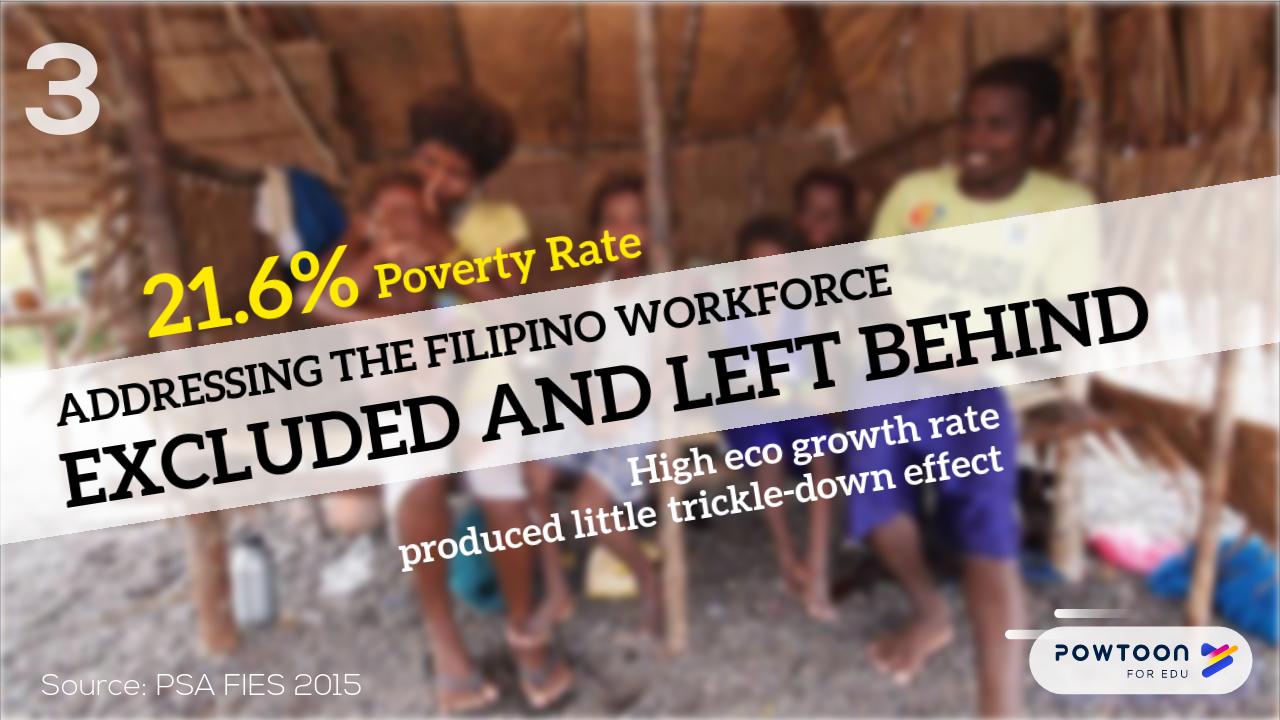
Access to TVET also poses a challenge. Limited funding and other resource limitations contribute to certain sectors not being attended to and reached by TVET.
One such sector is the marginalized and disadvantaged poor, which government data in 2015 recorded at 21.6 percent.
NTESDP OBJECTIVES
To address these problem areas and challenges, the NTESDP 2018-2022, has set five broad objectives:
1. Create a conducive and enabling environment for the development and quality service delivery of the TVET sector;
2. Prepare the Philippine workforce for the challenges posed by the Fourth Industrial Revolution;
3. Assure industries with high economic and employment growth potentials and provide them the required quantity of quality workforce;
4. Directly and more vigorously address workforce needs of the basic sectors and the disadvantaged; and
5. Instill values and integrity in the conduct and delivery of TVET in the whole sector.
THE STRATEGIC RESPONSES
The achievement of these objectives is recognized to pave the way for changes on how the Philippines should view the world of work and influence and create new ways of thinking, learning, and working.
The TESDA recognizes that this world of work demands more knowledgeable and skilled workforce, innovative and sustainable approaches, globally competitive standards, and ease of access and mobility for TVET stakeholders.
The NTESDP is envisioned to address these demands. It has outlined strategic responses to address the five objectives. These are:

1. TVET with Agility—to prepare the Philippine workforce for global competitiveness and future world of work;
2. TVET with Scalability—to deliver high quantity job-ready, quality workforce; and
3. TVET with Flexibility and Sustainability for social equity and economic inclusion.
These strategic responses are resolutely supported by organizational initiatives, as follows:
1. TVET with Conducive and enabling environment, for development and quality service delivery; and
2. TVET with Integrity, to instill sector credibility and client confidence.
These responses are designed to allow TVET to be vigilant and adaptable to changes in the sector. The NTESDP focuses on the preparation and anticipation of stakeholders’ needs through skills forecasting and anticipation and
other research and development approaches; close engagement with clients to keep pace with their demands for the world of work and to be responsive with the needs of society in general; and the development of a comprehensive,
inclusive and equitable service delivery to all Filipinos.
The NTESDP emphasizes convergence and collaboration of government units, industries, the academe, and relevant organizations for a successful, holistic service output.
TESDA’S COMMITMENT
The TESDA, together with the TVET sector, commits to address the issues, problems, and gaps culled from the lessons of the previous Plans in order for the sector to remain relevant.
In sum, the NTESDP 2018-2022 aspires to pursue and achieve Quality TVET for All.
